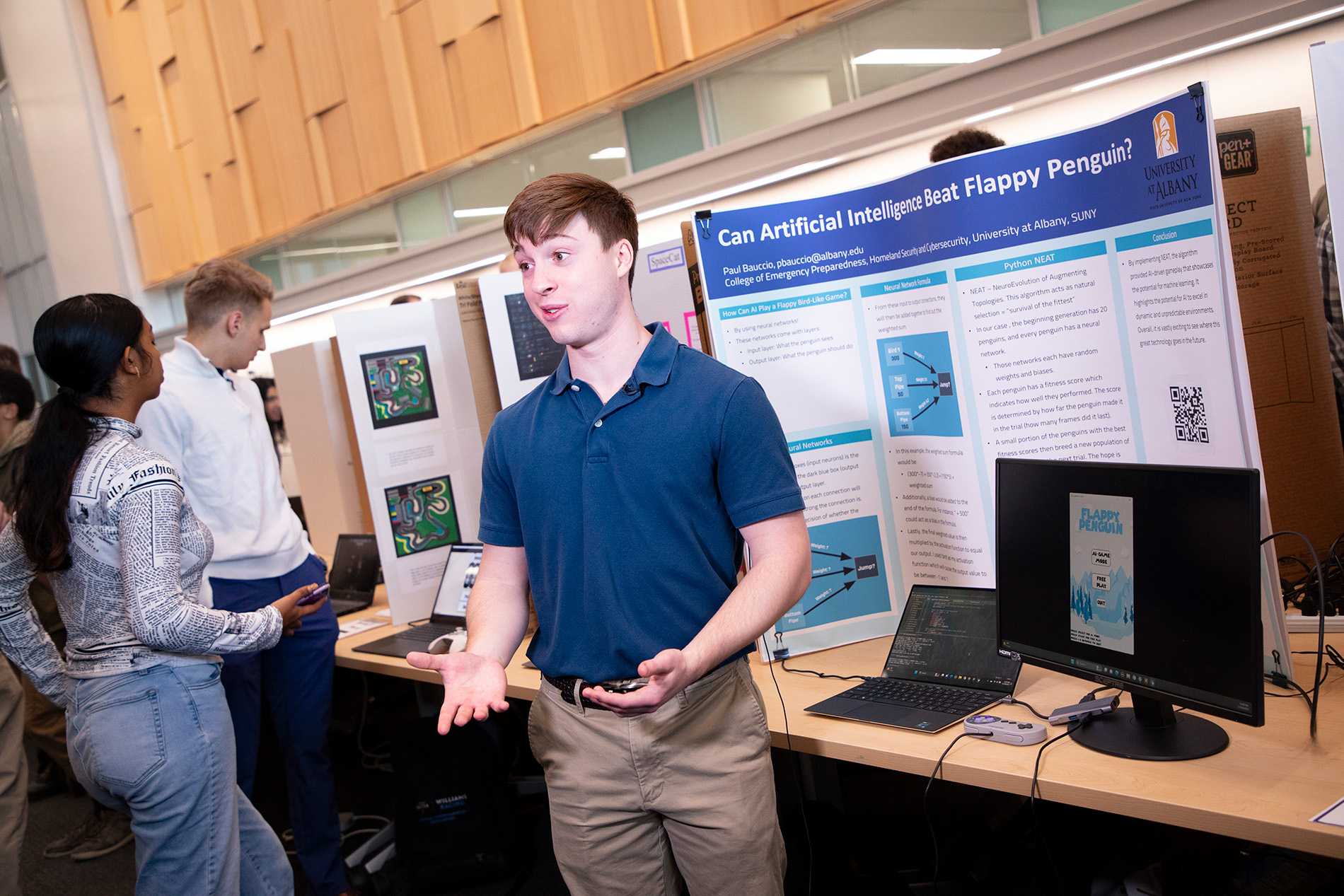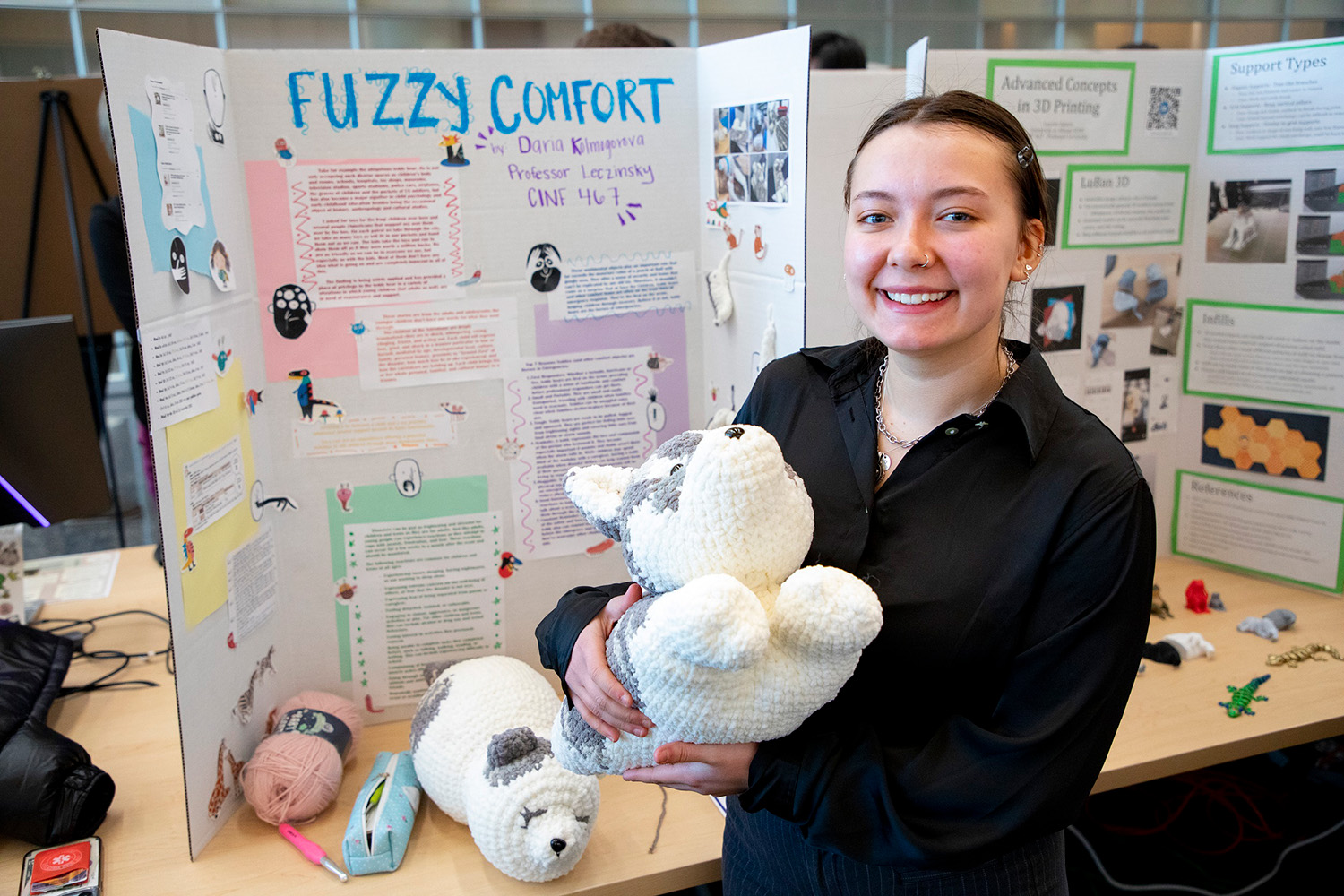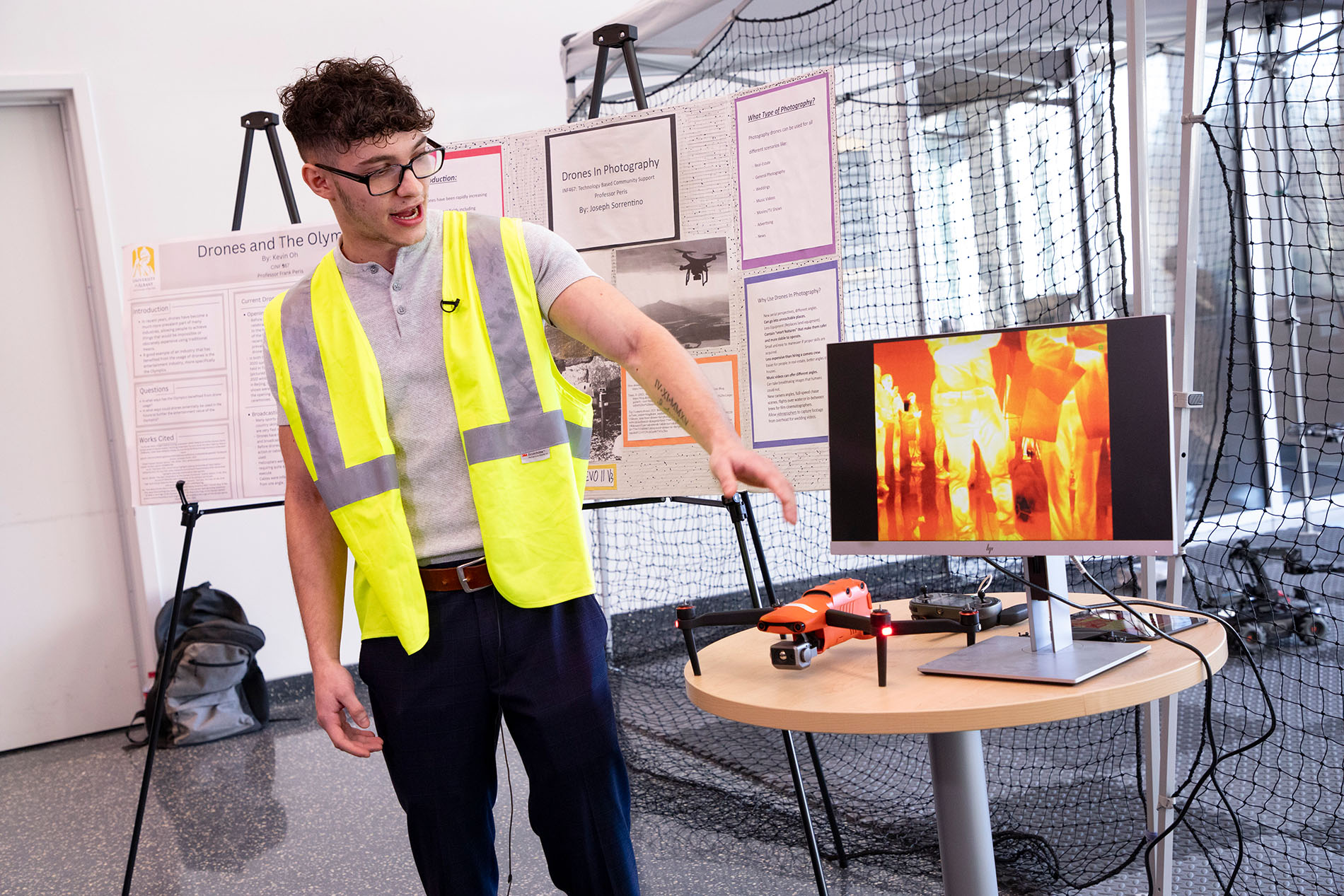CEHC Students Share Research and Creative Projects at Fall 2023 Showcase
By Mike Nolan
ALBANY, N.Y. (Dec. 12, 2022) — Hundreds of students from the College of Emergency Preparedness, Homeland Security and Cybersecurity (CEHC) gathered at the ETEC research and development complex earlier this month to share their research and creative work with the campus community.
CEHC’s Fall 2023 Showcase included interactive displays and poster presentations from 350 undergraduate and graduate students across disciplines such as cybersecurity, emergency preparedness, homeland security, informatics and school library.
The full-day event also featured a career fair with 15 public and private sector organizations. A virtual option offered fully online students and others who could not attend an opportunity to present as well.
Outsmarting the Game
Paul Bauccio, a senior informatics major, focused this semester on learning about Python, a general-purpose programming language used for developing websites and software, task automation, data analysis and data visualization. The program is commonly used in artificial intelligence and machine learning projects.

For his showcase project, Bauccio used Python to create a simulation that can beat “Flappy Bird,” a mobile game where a player controls a bird, attempting to fly between columns of green pipes without hitting them.
Bauccio’s simulation begins with 20 penguins, with the coding behind the longest-lasting ones being used to “breed” a new generation. The simulation continuously runs, making the penguins stronger and stronger each time.
“This was the first gaming simulation I’ve created using artificial intelligence,” said Bauccio, who is a student assistant in CEHC’s makerspace this semester. “AI can be used across so many different applications now. Without CEHC, I would have never stepped into the world of Python. It’s exciting to have my hands in this technology.”
Supporting Children in Disasters
Daria Kolmogorova, a sophomore emergency preparedness, homeland security and cybersecurity major, has spent the semester crocheting weighted stuffed animals, including a few she brought to showcase.
The stuffed animals will be donated to local emergency managers and first responders to give to children who have been displaced from a disaster event, such as a house fire. They are stuffed with a polyester fiberfill and feature a hand-sewn pocket that was created in CEHC’s makerspace.

Kolmogorova volunteers for Five Quad, a New York State-certified ambulance agency operated by UAlbany students. She’s interested in working in disaster relief after graduating from CEHC’s combined master’s program.
“When children are displaced, it can often disrupt their routine for weeks, months or even years at a time,” said Kolmogorova. “Having a stuffed animal gives them a sense of comfort and something to hold on to when they’re having a bad day. It can make a big difference.
“Between my classes at CEHC, and volunteering at Five Quad, it made me realize that I want to be hands-on with disaster relief,” she added. “My hope is to join a private or federal emergency agency and get to work directly with children who need support.”
Drones, Robotics and Emerging Tech
Joseph Sorrentino, a senior informatics major, was among the students in CEHC instructor Frank Peris’ “Courses in Informatics (CINF) 467: Tech-Based Community Support” class this semester.
The three-credit course includes a mix of traditional lectures, sessions in CEHC labs and both on- and off-campus events where students engage with drones, robotics and simulators.

Among the course requirements, students must work on-site as interns at the CEHC Drone Lab. The 1,700-square-foot testing grounds, located in the basement of Page Hall on the Downtown Campus, offer a controlled indoor environment for unmanned aerial vehicle (UAV) flight training, along with land-based robotics research.
Students in the class, including Sorrentino, brought a drone pop-up tent to showcase, providing live drone and robotics demonstrations.
“Showcase is a great opportunity for students and faculty to come together and learn about all the different areas of CEHC,” said Sorrentino. “I never thought I’d be flying drones as a student. It’s been a really cool experience, and now, we get to show off what we’ve been working on this semester.”




